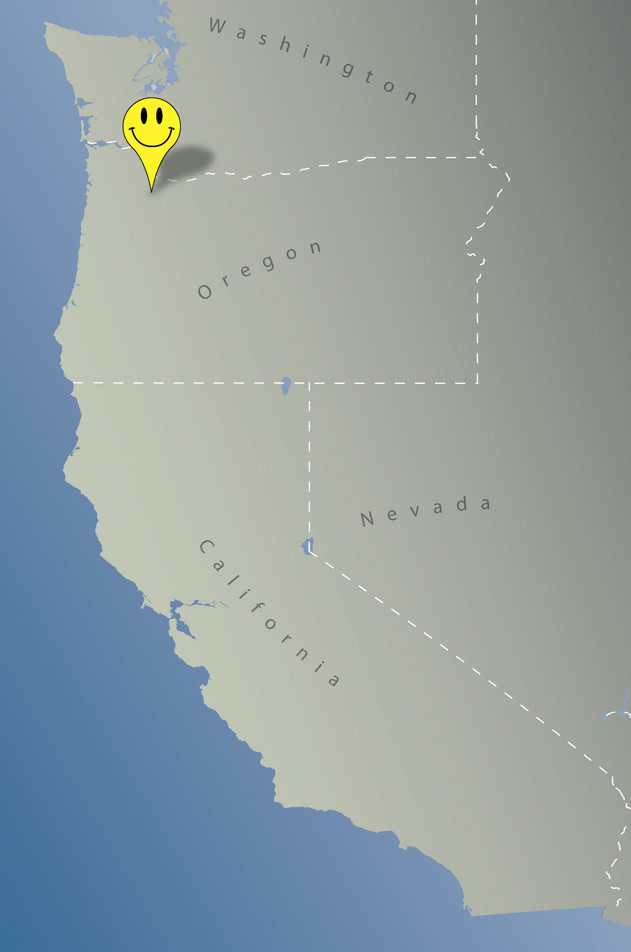The Best of Times

Image: Michael Novak
Lately, Nick Fish has been pitching the hardest of hard sells: optimism.
Oh, the city commissioner knows he’s out of step with the angst that lingers over Portland like the “arctic blasts” our TV newsrooms love. “We’re in this terrible recession, and many important indicators are bad,” Fish grants. “People are gloomy. In many cases, they have a right to be.”
Still, he forges on. “Bad news often crowds out stories that show where the seedlings of revival are taking root,” he says. “There are a ton of hopeful signs.”
Hope? Really? So 2008, right? Our unemployment rate—well north of 10 percent—no longer falls even when the job total grows. Demand for food stamps, the Oregon Health Plan, and aid for needy families are all spiking to record levels; meanwhile the state faces massive budget cuts. A recent Brookings Institution study identified Portland as one of the recession’s hardest-hit cities … in the world.
As the commissioner tasked with homeless issues, Fish sees this local saga’s darkest shades. Yet he also insists that another, alternative narrative is taking shape: the story of a city on the cusp of a singularly bright future.
The weird thing is, he may be right.
At the start of a new year (and a new decade) conversations with influential Portlanders seem to unfold in two beats. One: Yes, rocky days. Two: But …. For every portent of doom, there’s a subterranean tremor of positivity.
Fish, for example, cites downtown Portland’s office vacancy rate of 10.7 percent, roughly half that of Kruse Way, a plush corporate property-tax haven in Lake Oswego (21.2 percent). Port of Portland director Bill Wyatt notes that “people watching every penny don’t fly”—yet traffic at PDX jumped unexpectedly this fall. On a grander scale, Intel’s $4 billion–plus expansion plans seem to give everyone a contact high.
The most intriguing conversations have a third beat: Portland’s underlying strengths could soon pay off big time.
Yes, home values are suffering, with October median prices down nearly 5 percent from a year before. (National prices dropped 3 percent over the same period.) But a 2011 forecast from the Urban Land Institute predicts that in an “era of less,” smart money will flood dense urban neighborhoods. If that’s true, Portland—which built exactly those places during the sprawl-crazed ’90s and ’00s—could be in luck.
And that may apply to business as well. The new Pearl District office building MachineWorks looked DOA when it debuted in February 2009. Now it’s full, with tenants like Microsoft and McCormick & Schmick’s. In general, the city center now attracts businesses that suburban campuses once monopolized—from tech’s zippy Jive Software to under-the-radar testing company Northwest Evaluation Associates, which moved 450 employees to Old Town from Lake O in December.
“We benefit from powerful trends toward density and quality of life,” says MachineWorks developer Al Solheim. “Companies want places their employees can live and work.”
In other alternate-reality news, 2009 saw a record number of new city business licenses. A July 2010 Brookings report ranked Portland second in the nation in exports. Despite blue-collar America’s decline, more than 100,000 people still work in our industrial districts. In the longer term, Portland could prosper from global economic shifts. Port director Wyatt, for instance, says the two-decade project to deepen the Columbia River shipping channel readies us for China’s appetite for better food. Wheat and barley exports are already up, and the Port expects growth in meat, seafood, and dairy products.
Portland also harbors good news in areas even more crucial than business—like education and, y’know, oxygen.
About half of Portland Public Schools high school students graduate in four years, and Oregon’s higher-ed funding ranks bottom-10 (below Arkansas, South Carolina, and other stereotypically rednecked states). But an hour with Wim Wiewel, Portland State University’s president, reveals an urban-educational juggernaut quietly taking shape.
Despite $11 million in state funding cuts this year, PSU is rocking: opening biotech “wet labs”; allying with Oregon Health & Science University; building a new, LEED-certified 1,000-bed dorm; boosting research funding from $40 million to $58 million—45 percent—over the last two years. More to the point, Wiewel believes Oregon’s urban school occupies a 21st-century sweet spot.
“Global economic competition takes place in cities,” Wiewel says. “Students who want that environment will gravitate to places like Portland State. We awarded more degrees last year than any Oregon university ever—over 5,000.”
We even offer chipper tidings on modernity’s ultimate downer: ecological unraveling.
“Our personal carbon footprints are getting smaller,” notes city sustainability director Susan Anderson. “Portland emissions have fallen by more than 20 percent per capita since 2000. Portland is headed in the right direction—unlike the rest of the country.”
Does that count as half-hopeful? At this point, we’ll take it. Cheers!



